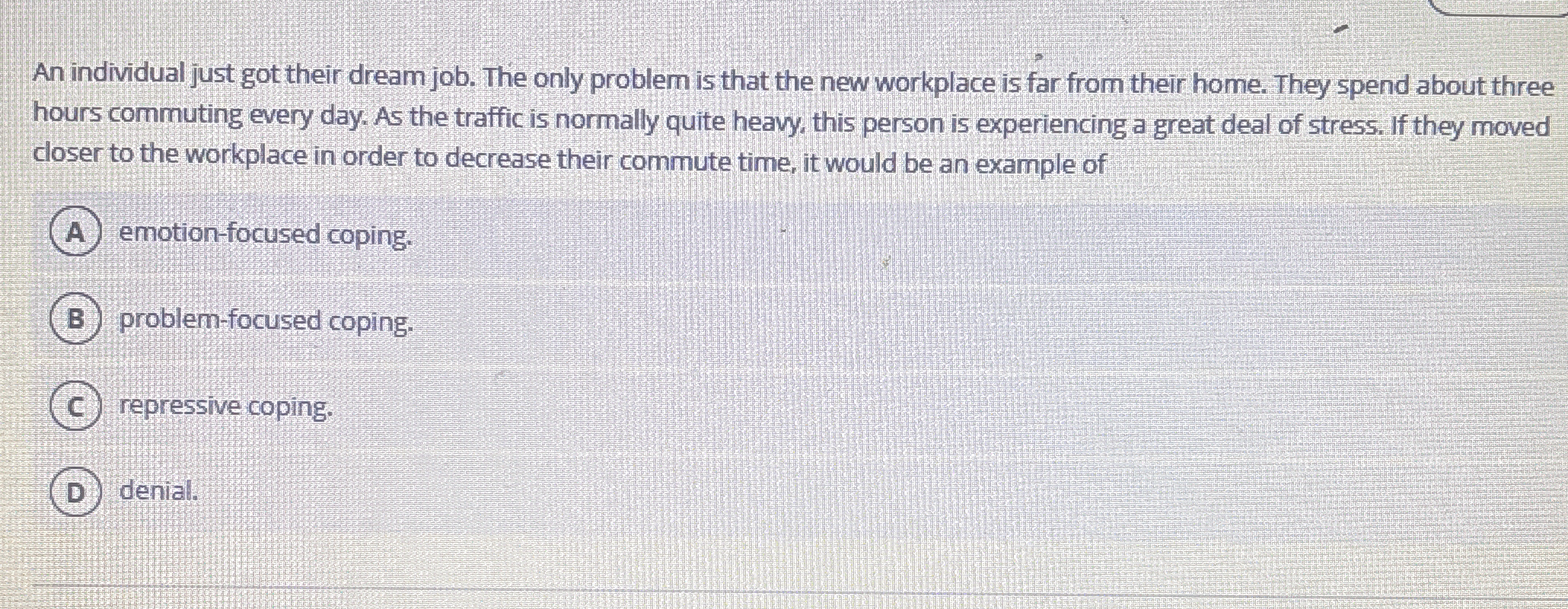An individual just got their dream job. The only problem is that the new workplace is far from their home. They spend about three hours commuting every day. As the traffic is norma... An individual just got their dream job. The only problem is that the new workplace is far from their home. They spend about three hours commuting every day. As the traffic is normally quite heavy, this person is experiencing a great deal of stress. If they moved closer to the workplace in order to decrease their commute time, it would be an example of what type of coping?

Understand the Problem
The question asks about the type of coping mechanism an individual is using when they decide to move closer to their workplace to reduce commuting stress. The context involves recognizing the nature of coping strategies.
Answer
Problem-focused coping.
The final answer is problem-focused coping.
Answer for screen readers
The final answer is problem-focused coping.
More Information
Problem-focused coping involves addressing the root cause of stress. In this scenario, moving closer reduces commute time, directly tackling the cause of stress.
Tips
People often confuse problem-focused and emotion-focused coping. Remember, problem-focused addresses the problem itself, while emotion-focused deals with emotional responses.
AI-generated content may contain errors. Please verify critical information